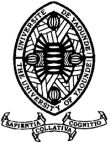Current Detection of Crystals and Bacteria in Urine during Urinary Tract Infections in Libreville, Gabon
Identification des Cristaux et des Bactéries dans l'Urine lors d'Infections Urinaires à Libreville, Gabon
DOI:
https://doi.org/10.5281/hra.v2i10.6081Keywords:
Urine, Crystals, Bacteria, GabonAbstract
ABSTRACT
Introduction. In Gabon, no studies have yet identified the crystals and bacteria found in urine during urinary tract infections in Libreville. The aim of this study is to identify the crystals and bacteria commonly found during urinary tract infections and to measure their prevalence, as well as the correlation existing between these crystals and bacteria. Methods. This was an observational Study on patients, aged between three months to 83 years old, who consulted between 1995 and 2015 at the Bacteriology Laboratory of the Bacteriology and Virology Department of Libreville Health Sciences University in Gabon for a urine cytobacterial analysis. Results. We collected 1262 urine samples. Crystals were identified in 249 (19.7%) patients. Calcium oxalate and uric acid were the most commonly found crystals in 167 (13.2%) and 32 cases (2.5%), respectively. Crystal mixtures were found in 22 patients, including seven cases of calcium oxalate-uric acid (OxCalAcUr) and four cases of calcium oxalate-struvite (OxCalStruvite). Crystals were more often detected in patients with urinary tract infections than those without, (23.3%, P=0.03). Bacteria were isolated in 32% of patients (404/1262). They belonged mainly to the Escherichia (9.6%; 121 cases), Staphylococcus (7%; 89 cases), Streptococcus (5%; 63 cases) and Klebsiella (3%; 38 cases) genera. Urinary tract infections were common in patients over 60 years old and in those with alkaline urine pH. Women were more likely to be infected. Conclusion. Crystals and bacteria, especially E. coli, are common and often coexist in patients experiencing urinary tracts infections in Libreville, Gabon. Further studies should evaluate the relationship between bacteria and kidney stones in lithiasis patients in Gabon.
RESUME
Introduction. Au Gabon, aucune étude n'a encore identifié les cristaux et les bactéries retrouvés dans les urines au cours des infections urinaires à Libreville. Le but de cette étude est d'identifier les cristaux et les bactéries fréquemment retrouvés lors des infections urinaires. Méthodologie. Il s'agit d'une étude observationnelle sur des patients, âgés de trois mois à 83 ans, qui ont consulté entre 1995 et 2015 au laboratoire de bactériologie du service de bactériologie et de virologie de l'université des sciences de la santé de Libreville au Gabon pour une analyse cytobactérienne des urines. Résultats. Nous avons collecté 1262 échantillons d'urine. Des cristaux ont été identifiés chez 249 patients (19,7%). L'oxalate de calcium et l'acide urique étaient les cristaux les plus fréquemment trouvés dans 167 (13,2 %) et 32 cas (2,5 %), respectivement. Des mélanges de cristaux ont été trouvés chez 22 patients, dont sept cas d'oxalate de calcium-acide urique (OxCalAcUr) et quatre cas d'oxalate de calcium-struvite (OxCalStruvite). Les cristaux ont été plus souvent détectés chez les patients souffrant d'une infection urinaire que chez ceux qui n'en souffraient pas (23,3 %, P=0,03). Des bactéries ont été isolées chez 32% des patients (404/1262). Elles appartenaient principalement aux genres Escherichia (9,6% ; 121 cas), Staphylococcus (7% ; 89 cas), Streptococcus (5% ; 63 cas) et Klebsiella (3% ; 38 cas). Les infections urinaires étaient fréquentes chez les patients âgés de plus de 60 ans et chez ceux dont le pH urinaire était alcalin. Les femmes étaient plus susceptibles d'être infectées. Conclusion. Les cristaux et les bactéries, en particulier E. coli, sont fréquents et coexistent souvent chez les patients souffrant d'infections urinaires à Libreville, au Gabon. D'autres études devraient évaluer la relation entre les bactéries et les calculs rénaux chez les patients porteurs de lithiase au Gabon.
References
Pak CYC. 1998. Kidney stones. Lancet 351:1797–801.
Basavaraj DR, Biyani CS, Browning AJ, Cartledge JJ. 2007.The Role of Urinary Kidney Stone Inhibitors and Promoters in the Pathogenesis of Calcium Containing Renal Stones. EAU-EBU Updat Ser 5:126–36.
Daudon M, Frochot V. 2015.Crystalluria. Clin Chem Lab Med 53:S1479–87.
Lieske JC, Peña De La Vega LS, Slezak JM, Bergstralh EJ, Leibson CL, Ho KL, Gettman MT. 2006. Renal stone epidemiology in Rochester, Minnesota: An update. Kidney Int 69:760–4.
Shojaeian A, Rostamian M, Noroozi J, Pakzad P. 2016. The Identification of Chemical and Bacterial Composition and Determination of FimH Gene Frequency of Kidney Stones of Iranian Patients. Zahedan J Res Med Sci 18(6):e7363.
Prabhu N, Marzuk S, Banthavi S, Sundhararajan A, Uma A, Sarada V. 2015. Prevalence of crystalluria and its association with Escherichia coli urinary tract infections. Int J Res Med Sci 3:1085.
Murayama T, Taguchi H. 1993. The role of the diurnal variation of urinary pH in determining stone compositions. Journal of Urology 150 5 I:1437–9.
Papapoulos SE, Bijvoet OLM. 1984. Excessive Crystal Agglomeration With low citrate excretion in recurrent stone-formers. Lancet 1(8489):1056–8.
Ryall RL, Harnett RM, Marshall VR. 1981. The effect of urine, pyrophosphate, citrate, magnesium and glycosaminoglycans on the growth and aggregation of calcium oxalate crystals in vitro. Clin Chim Acta 112:349–56.
Asplin JR, Lingeman J, Kahnoski R, Mardis H, Parks JH, Coe FL. 1998. Metabolic urinary correlates of calcium oxalate dihydrate in renal stones. J Urol 159:664–8.
Azoury R, Robertson WG, Garside J. 1987. Observations on in vitro and in vivo Calcium Oxalate Crystalluria in Primary Calcium Stone Formers and Normal Subjects. Br J Urol 59:211–3.
Ivanovski O, Drüeke TB. 2013. A new era in the treatment of calcium oxalate stones? Kidney Int 83:998–1000.
Nacaroglu HT, Demircin G, Bülbül M, Erdogan Ö, Akyüz SG, Çaltik A. 2013. The association between urinary tract infection and idiopathic hypercalciuria in children. Ren Fail 35:327–32.
Hooton TM, Stamm WE. 197. Diagnosis and treatment of uncomplicated urinary tract infections. Infectious Disease Clinics 11:3.
Caletti MG. 2014. Idiopathic hypercalciuria in children with urinary tract infection. Arch Argent Pediatr 112:396.
Barr-Beare E, Saxena V, Hilt EE, Thomas-White K, Schober M, Li B, et al. 2015. The interaction between enterobacteriaceae and calcium oxalate deposits. PLoS One 10:1–17.
Rodman JS. 1998. Struvite stones. Nephron 81 SUPPL. 1:50–9.
Kramer G, Klingler HC, Steiner GE. 2000. Role of bacteria in the development of kidney stones. Curr Opin Urol 10:35–8.
Mohamed Marzuk S, Prabhu N, Radhakrishna L S V. 2014.Urine Examination for Determining The Types of Crystals – A Comparative Approach Related to pH. J Pharm Biomed Sci 04:1072–8.
Ndzime YM, Onanga R, Kassa RFK, Bignoumba M, Nguema PPM, Gafou A, et al. 2021. Epidemiology of community origin escherichia coli and klebsiella pneumoniae uropathogenic strains resistant to antibiotics in Franceville, Gabon. Infect Drug Resist 14:585–94.
Scherbaum M, Kösters K, Mürbeth RE, Ngoa UA, Kremsner PG, Lell B, et al. 2014. Incidence, pathogens and resistance patterns of nosocomial infections at a rural hospital in Gabon. BMC Infect Dis 14:13–5.
Dibua UME, Onyemerela IS, Nweze EI. 2014. Frequency, urinalysis and susceptibility profile of pathogens causing urinary tract infections in Enugu state, southeast Nigeria. Rev Inst Med Trop Sao Paulo 56:55–9.
Reddy EA, Shaw A V., Crump JA. 2010. Community-acquired bloodstream infections in Africa: a systematic review and meta-analysis. Lancet Infect Dis 10:417–32.
Mourembou G, Nzondo SM, Ndjoyi-Mbiguino A, Lekana-Douki JB, Kouna LC, Matsiegui PB, et al. 2016. Co-circulation of plasmodium and bacterial DNAs in blood of Febrile and Afebrile children from urban and rural areas in Gabon. Am J Trop Med Hyg 95:123–32.
Mitchell T, Kumar P, Reddy T, Wood KD, Knight J, Assimos DG, RP. 2019. Dietary oxalate and kidney stone formation. Am J Physiol Renal Physiol 316(3): F409–F413.
Chutipongtanate S, Sutthimethakorn S, Chiangjong W, Thongboonkerd V. 2013. Bacteria can promote calcium oxalate crystal growth and aggregation. J Biol Inorg Chem 18:299–308.
Iwata H, Nishio S, Yokoyama M, Matsumoto A, Takeuchi M. 1989. Solubility of uric acid and supersaturation of monosodium urate: Why is uric acid so highly soluble in urine? J Urol 142:1095–8.
Schwaderer AL, Wolfe AJ. 2017. The association between bacteria and urinary stones. Ann Transl Med 5:3–8.
Elisabetta M, De Ferrari, Macaluso M, Brunati C, Pozzoli R, Colussi G. 1996. Hypocitraturia and Ureaplasma urealyticum urinary tract infection in patients with idiopathic calcium nephrolithiasis. Nephrol Dial Transplant 11: 1185-1193.
Folliero V, Caputo P, Rocca Della MT, Chianese A, Galdiero M, Iovene MR, et al. 2020. Prevalence and antimicrobial susceptibility patterns of bacterial pathogens in urinary tract infections in university hospital of campania “luigi vanvitelli” between 2017 and 2018. Antibiotics 9:1–9.
A-Kone A. 2011. L’infection urinaire en milieu pediatrique du chu Gabriel Toure à propos de 70 cas. Thèse de Medecine. Université de Bamako, 64 pages.
Ronald A. 2002. The etiology of urinary tract infection: Traditional and emerging pathogens. Am J Med 113 (Issue 1, Supplement 1):14-19.
Milama NN, PA F, Mougougou A, Massandé J. 2019. Study of the susceptibility profile of the bacteria responsible for urinary community infections of the adult in urological environment. Bull Med Owendo 17:36–42.
Linhares I, Teresa Raposo T, Rodrigues A, Almeida A. 2013. Frequency and antimicrobial resistance patterns of bacteria implicated in community urinary tract infections: a ten-year surveillance study (2000-2009). BMC Infectious Diseases 13:19.
El bouamri MC, Arsalane L, Kamouni Y, Yahyaoui H, Bennouar N, Berraha M, et al. 2014. Current antibiotic resistance profile of uropathogenic Escherichia coli strains and therapeutic consequences. Prog en Urol 24:1058–62.
Niger
Downloads
Published
How to Cite
Issue
Section
License
Copyright (c) 2024 Gaël Mourembou, Guy Francis Nzengui-Nzengui, Claudine Ayawa Kombila-Koumavor, Hervé Kamdem-M’boyis, Sydney Maghendji-Nzondo, Angélique Ndjoyi-Mbiguino

This work is licensed under a Creative Commons Attribution-NoDerivatives 4.0 International License.
Authors who publish with this journal agree to the following terms:
- Authors retain copyright and grant the journal right of first publication with the work simultaneously licensed under a Creative Commons Attribution License CC BY-NC-ND 4.0 that allows others to share the work with an acknowledgement of the work's authorship and initial publication in this journal.
- Authors are able to enter into separate, additional contractual arrangements for the non-exclusive distribution of the journal's published version of the work (e.g., post it to an institutional repository or publish it in a book), with an acknowledgement of its initial publication in this journal.
- Authors are permitted and encouraged to post their work online (e.g., in institutional repositories or on their website) prior to and during the submission process, as it can lead to productive exchanges, as well as earlier and greater citation of published work










